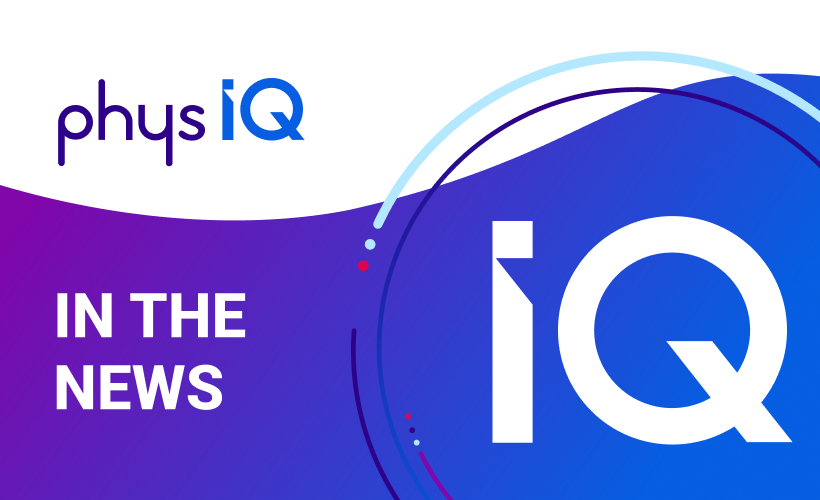Inside an Individual’s Physiological Signature
Originally published in Medical Device & Technology
3 min read
![]() Dr. Steve Steinhubl & Karen Larimer, PhD, ACNP-BC, FAHA
:
June 15, 2020
Dr. Steve Steinhubl & Karen Larimer, PhD, ACNP-BC, FAHA
:
June 15, 2020

Originally published in Healthcare IT Today
Plato wrote “necessity is the mother of invention”. The COVID-19 crisis has surfaced far too many unmet necessities in our current systems of care. Healthcare’s traditional dependence on face-to-face encounters for evaluation and management of patients risks the health of both patients and the clinical team. It also artificially distills a patient’s health trajectory into one of two potential interactions: 1) I feel bad or 2) I have an appointment. This limited level of engagement allows only reactive, or sickness care. This paradigm does not meet patient needs pre-COVID-19 and is set up to fail at a frightening scale during the COVID-19 crisis.
To address this crisis head-on and into the future, the solution lies in reengineering systems of care built around the capabilities of novel digital technologies. Digital technologies can be utilized to keep people well, recognize as early as possible when that changes, and then monitor their response to therapeutic interventions, all within the patient’s home. Inconceivable even five years ago, we now have the technologies (personal sensors, machine learning, and digital connectivity) to make this shift, and the COVID-19 crisis provides the impetus to do so.
COVID-19 has already driven long overdue changes by better supporting telemedicine through improved reimbursement and less regulation. Nonetheless telemedicine is still grounded in episodic ‘visits’- mirroring our current system of care. While it offers the incremental benefit of patient convenience, telehealth falls short of taking advantage of what digital technologies can do to transform healthcare for patients affected by the severe acute respiratory syndrome coronavirus 2 (SARS-CoV-2) virus.
More robust digital technologies make it is possible to track a person’s current state of wellness, not just year to year but day to day or even minute to minute. Continuous monitoring defines wellness as what is “normal” for that individual, rather than a population’s ‘normal.” For example, instead of defining heart rate as “normal” based on whether it falls within a population “normal” range (e.g. 60-100 BPM), it can now be defined as what is normal for that person when they are feeling well. Many consumer wearable devices (watches, rings), enable our heart rate/rhythm, respiratory rate, skin temperature and more to be passively and continuously tracked. Preliminary studies show that recognizing small changes only recognizable as subtle variations in that person’s “normal”, can improve the diagnosis of viral illnesses. With over 20% of Americans regularly using a smartwatch/activity tracker, this could be valuable now.
The rate limiter in use of nearly all remote patient monitoring solutions is the required labor force to process incoming data by already over-burdened clinical providers. This is likely why remote monitoring solutions, for any use-case, are limited to rudimentary point measurements like twice daily temperatures. This pattern of use, or even that single parameter, is unlikely to be the most effective way to monitor for decompensation, but rather determined by values and pacing with which providers are comfortable. The limitation of this patterned assessment is highlighted by published literature that suggests that <50% of hospitalized COVID-19 patients have a fever at the time of admission4-6, and research of other viral infections shows that a significant increase in heart rate can be detected ~2 days prior to a fever. We are likely missing out on early warning signs of COVID-19 by focusing only on spot checks for fever and oxygen saturation.
The solution to the clinical provider bottle neck is machine learning. Machine learning techniques ingest enormous amounts of continuously generated data and identify the earliest signs of decompensation based on an individual’s unique changes. This combination of biosensors and machine learning can be especially valuable in the highest risk COVID-19 patients. Multiparametric patches can continuously track and transmit a range of vital signs. Continuous patch monitoring, supported by machine learning algorithms that learn a patient’s baseline and reacts to changes, can provide ICU-quality monitoring in the patient’s home allowing out of hospital management of high-risk patients. And most critically, at a time of marked shortages in resources to manage COVID-19, this type of monitoring is easily scalable with fewer clinicians needed to safely care for thousands of patients.
Healthcare is in need of a revolution and digital technologies can make that happen, but we need to think differently and boldly about new systems of care that fully take advantage of what is possible. Winston Churchill said “Never let a good crisis go to waste.” We are facing the greatest crisis modern healthcare has ever faced. It is critical that we take advantage of this period to develop new systems of care built around the capabilities of digital health technologies and the needs of patients, and not be constrained by historical practices.

Originally published in Medical Device & Technology

Originally published in Pixel Scientia Labs

Originally published in Crain's Chicago